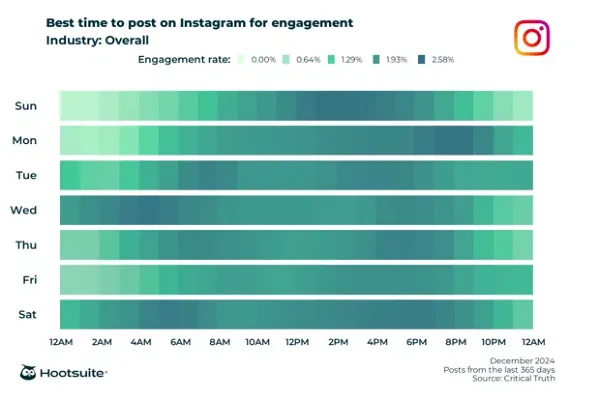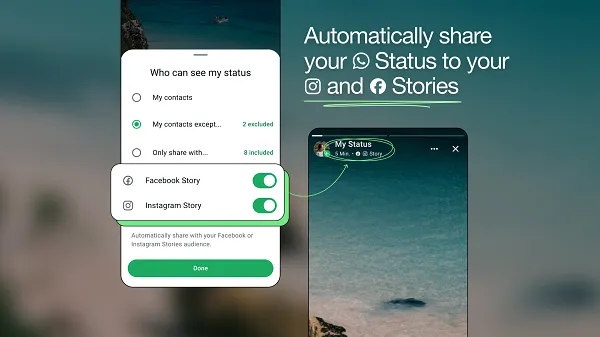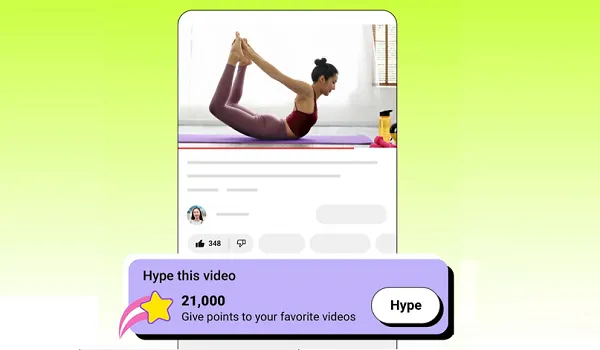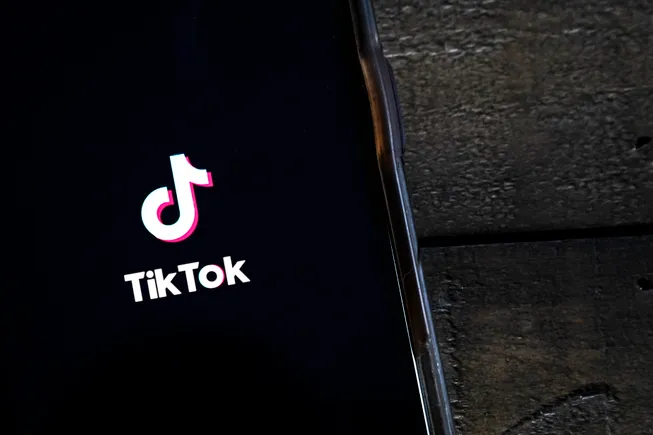How to get AI to write copy in your brand voice — from picking the right platform to training your GPT
When generative AI first came out, I was skeptical. While it came up with some good ideas, I saw it more as a novelty than a real copywriting tool. Honestly, I didn’t believe “great” and “on-brand AI copywriting” would...

When generative AI first came out, I was skeptical. While it came up with some good ideas, I saw it more as a novelty than a real copywriting tool. Honestly, I didn’t believe “great” and “on-brand AI copywriting” would ever belong in the same sentence. To be clear, I still see my own brain and approach as a competitive advantage. That hasn’t changed, but two things have shifted: And, I’ve found the biggest shift by thinking of myself as a copy chief and AI as a junior writer. It has fantastic ideas but needs strong guardrails, constant feedback, and clear direction. And, I’m going to show you how. Table of Contents For starters, I don’t believe that there is a single “best” AI platform for copywriting. It really comes down to personal preference. ChatGPT was the clear winner among the people I spoke with for this article, with Claude and DeepSeek close behind. If you’re already using HubSpot, Breeze AI and AI Content Assistant now includes brand voice capabilities too. The tool can help your team stay consistent across emails, blogs, and landing pages directly inside your marketing workflows. Personally, I prefer ChatGPT. It’s where I’ve spent the most time, I’m comfortable with the platform, and most importantly, I know how to engineer prompts and give feedback that gets good results. Plus, since I’m already paying for it, it makes sense to focus there. If you haven’t played around with AI much yet, I highly recommend experimenting. Take a few different platforms, feed each the same prompts, and see what comes back. Pay attention to: Based on the responses, the user experience, and how well each one fits as your copywriting assistant, you can pick your go-to. And remember, you don’t have to commit to just one. Several copywriters and strategists I spoke with use different platforms depending on the project. The first thing you need to know about training an AI platform is that you can’t just say “write like me” without any context. It’s a garbage-in, garbage-out kind of thing, and it’s on you to set it up for success. So if you really want your generative AI platform to write like you, you have to teach it your voice and give it good material to work from, just like you would if you were briefing a junior copywriter. Over the past few years, I’ve trained ChatGPT to understand my writing style, and those of a few different clients to make sure it knows what to watch for when I need to brainstorm, draft, or edit. As I was preparing to write this guide, a client project came along where we were synthesizing and updating the messaging for the parent company and its dozen sub-brands. It gave me the perfect opportunity to build a clear set of guidelines for communicating across different services, topics, styles, and audiences — all while maintaining a consistent, customer-first ethos. I followed the steps below, and I was blown away by how well it worked. That said, I didn’t want this guide to reflect only my experience. You’ll also find insights, quotes, and examples throughout this article from other copywriters and strategists, so you get a full, well-rounded perspective on what it really takes to train AI to write like you. If you’re wondering how to train AI to write in your brand voice, I want you to start by thinking of AI as a new person on your team, not just an AI platform. You have to be crystal-clear, coach it along the way, and offer constructive feedback and examples until it actually understands your voice. And unlike a junior copywriter, you can tell your AI assistant that you hate what it’s done, and no feelings get hurt. HubSpot’s Amy Marino shares that AI has done a good job capturing the team’s customer-centric, value-focused approach to copy, whether for an internal or external project. “That said, where we've had the most rounds of back and forth has been in my pushes to be more creative, less derivative or jargon-y, and to use concrete examples to illustrate abstract concepts,” Marino says. She goes on to say that sharing previous scripts, briefs, and language she loved as examples helped AI understand what she liked and wanted … and helped get to the finish line faster. I’ve found that the best place to start is to tell AI that you’re training it on a new brand voice and name it. That way, if I say “write like Erin Pennings,” the AI I trained will know to use my voice. More importantly, without this foundation, AI will default to generic copy that doesn’t reflect your voice, values, or perspective. I caught up with Justin Blackman, a brand voice strategist who has worked with tons of brands to nail their voice, beliefs, and messaging, to find out what he’s seeing is working well. “Anyone I‘m doing voice finder sessions with is finding that it’s not so much the copy as it is the insight that's improved,” Blackman says. “With clarification on your approach, views, and opinion, it gravitates toward the right style with fleshed-out ideas that are about 83% publishable as is.” Blackman says he’s been through the same process he puts clients through and that he’s been impressed with the output when AI is properly trained on insight as well as tone and vocabulary. Pro tip: As part of this step, think about spelling out the big picture: Once you’ve given AI the big picture, the next step is getting it to see your voice in action. This is where your real-world examples come in. I like to feed AI a batch of strong samples — emails, social posts, sales pages, whatever fits. Then, ask it to analyze patterns and ask it to characterize the tone, cadence, style, and strategic choices you make without even thinking. When I got in touch with my colleague and friend Chris Collins, a strategist who was an early adopter of AI-assisted writing, he shared that he takes a similar approach. “I have a project in Claude with a bunch of my most representative posts, as well as a voice guide I created from them,” says Collins. “In fact, I think you can feed posts into Claude and ask it to create a detailed and specific guide anyone could use, and it will do a pretty good job.” Pro tip: When gathering examples, don’t just dump them in. Instead, try the following. Once AI has reviewed your examples, it’s time to review its understanding of your voice, not just the copy it produces. At this stage, you’re looking at how well it can describe your tone, style, structure, and perspective. I’d encourage you to think about this step like reviewing a junior copywriter’s notes before they ever write a draft to be sure they truly understand your voice before you hand them a project. When I was working on the client messaging project, the AI's first voice analysis was surprisingly strong. It nailed the overall tone, structure, and product focus. But, it missed one critical piece: the customer-first ethos that runs through every communication. That might sound small, but in an industry that’s not exactly known for customer obsession, it was the most important differentiator we needed to highlight. By providing this feedback to ChatGPT and offering some qualifying questions to use as a lens, it took the comms guidelines from okay to great. The importance of strong setup and thoughtful prompting came up again when I spoke with Ana Mendes, marketing coordinator at MeetEdgar. “Our biggest takeaway? AI can be incredibly helpful, especially for small or busy teams, but only when it’s trained properly and paired with thoughtful prompts,” Mendes shares. Pro tip: When reviewing AI’s voice analysis, focus not just on what sounds good but on what truly matters to your brand. The better you articulate what’s missing or what needs emphasis, the faster AI will start thinking the way you do. Once you've reviewed and refined AI’s understanding of your voice, it’s time to get it on paper — or at least into your AI tool. For this step, I want you to take the analysis of your examples, use them to document the tone, structure, themes, and key principles that define how you write and think, and the common traps to avoid. This doesn’t need to be long or fancy; it's just clear enough that if someone new (or your AI) picked it up, they could immediately “hear” you. For example, after refining the voice analysis for my client with multiple sub-brands, I built a simple set of guidelines that includes the following. There’s, of course, a great deal more information that I made sure to include, but this should give you an idea of where to start. From there, you can always develop some “say this, not that” options as well. Collins explains that documenting his voice for AI changed everything: “I created a detailed, specific voice guide based on my strongest posts — and it made a huge difference in how well AI could recreate my style consistently.” Pro tip: Save your guidelines somewhere you (and AI) can easily reference them every time you kick off a new project. I’ve found AI to be forgetful, so it’s a good idea to keep these handy. Training your AI isn’t a one-and-done project. I think the junior copywriter analogy is really strong here because it requires constant tweaking and training to get your AI to write more like you. That means, once you build your guidelines, start using them. Prompt AI using your framework, review the outputs, and keep offering micro-feedback as you go. You’ll probably notice that the more you work with your AI, the better it gets at anticipating your needs and catching your voice. But you’ll also notice moments where you still need to tweak, tighten, or reframe the guidelines to keep evolving as you do. In fact, I don’t think this will ever change — no matter how well you train the AI, there are plenty of times that it still … sounds like AI. My friend Lindsay Hope is an AI and email strategist, and she puts this so well. “AI copy performs best when it’s tweaked with the human touch. You still have to tie any writing back to a human, and that’s what I see people miss all the time,” she says. The vast majority of people I spoke with agreed that AI rarely gets it right from the get-go and still needs a human editor. Pro tip: One of the best pieces of advice I found in this came from Phillip DeRenzo, head of marketing at iAsk.ai. He writes, “Read your output out loud. If it makes you cringe, rework it.” When you’re first training AI to capture your brand voice, it’s easy to get stuck thinking you have to have a perfect voice guide ready. That might have been true at one point, but I no longer believe it’s necessary, at least as you get started. Instead, I’d recommend setting the stage and refining from there. These prompts should work across most major AI platforms, including ChatGPT, Claude, and HubSpot’s content assistant. No matter which tool you prefer, you can follow this process to start training your AI more effectively. Start by giving AI a short, clear intro to the brand and audience: Note: If you have done some brand voice work either on your own or with an expert like Blackman, then feel free to share more information, but don’t let not having this stop you. Rather than just dumping samples in, help AI understand why you’re sharing each piece. Here’s what that might look like: Before rushing into analysis, encourage AI to ask if it has any questions about the goals or requested outcome (and then answer them): Now, this is where I ask AI to identify patterns — and if applicable, pull out sample structures it sees across different content types. Here’s what ChatGPT came up with after I asked it to analyze some of my content: This is where you get to sharpen your copy chief skills and treat AI like a junior writer you’re coaching. What did AI get right? What did it miss? What needs tweaking? Finally, once the analysis feels solid, ask AI to turn it into a usable set of guidelines that it or a junior copywriter could use to start writing for this brand. Be sure to let AI know to name this as “Your Brand Name Voice Guidelines” so that you can ask for a recall anytime you start a project. Here’s a screenshot of the sample guide it developed: Pro tip: If you’re using HubSpot’s AI Content Assistant, their brand voice features can help reinforce consistency across blog posts, emails, landing pages, and more. It’s another great way to layer in your voice as you scale content creation. Now, you’re ready to go! Here’s how I prompt when I’m ready to pick up a new project: Pro tip: Create a dedicated project for each brand voice you train. In ChatGPT, you can also create custom GPTs to use, where you save your examples, guidelines, updates, and clarifications all in one place for easy access later. Here are some examples of LinkedIn hooks GPT created using that voice (which, ahem, is mine): I asked it to proceed with the first option, and this is what it cranked out. I loved it. You can expect to see it soon on my LinkedIn (or something VERY close). I’ve found that the examples you share matter just as much as the prompts you use. Remember, AI can only learn what you actually give it. So if you want it to pick up your best tone, structure, and emotional resonance, you have to feed it strong examples from the start. Here’s what I typically upload (and what you should consider too): Pro tip: Don’t overload the AI with junk. Picking five to ten great pieces that show your best work will help you get your best results. AI can do a lot. But at the end of the day, it’s still a tool, not a mind reader, a brand strategist, and it’s definitely not a substitute for your lived experience or personal perspective. Even when you train AI really well, there are still limitations you have to work with (and around). Trust me — been there, done that, got the wrong t-shirt. Here’s what I recommend watching for: HubSpot’s Amy Marino emphasizes the importance of treating AI collaboration as an ongoing, iterative process. She notes, “Embrace iterative collaboration: Be specific about what‘s working and what’s not. Direct feedback like ‘X doesn't make sense because Y’ or ‘too run-on, not sharp enough’ helped AI course-correct quickly.” Marino notes that by specifying constraints (like a 30-second time limit or no more than 10 words for a headline), you’ll get more practical suggestions that will fit your asset requirements. As Justin Blackman points out, "The biggest limitation of AI copywriting is that even if you can get it to write like you, it can’t think like you. So it’s on you to make sure it knows your perspective.” Blackman notes that AI can come up with ideas, but these ideas may not be aligned with your thinking unless you give it that info. Then you can bring it to life in a way that's uniquely you. In other words, AI can learn how you sound. But it can’t decide what you believe. You still have to teach it your perspective, your values, and your take on what matters most. Hope, who’s been integrating AI tools into her workflow for years, made this point crystal clear. Hope says, “AI copy performs best when it’s tweaked with the human touch. Anything purely informational and lacking story just feels robotic, and audiences can tell.” AI can save you time by giving you a strong starting point. But it’s the personal anecdotes, the humor, the emotional nuance — the things only you can add — that turn decent drafts into solid copy. Riley Westbrook, co-founder of Valor Coffee, summed it up beautifully when he shared his approach to AI. Westbrook says, “The biggest mistake I see is when people expect AI to find their voice. It won’t. You have to hand it your rhythm. If you do that, it’s a solid tool. If not, you end up rewriting the whole thing anyway.” Your brand’s cadence — how the words feel when spoken aloud — is something only you can teach. Skip this, and you’ll spend more time fixing drafts than actually moving projects forward. AI wants to make you happy. It’s trained to be agreeable, which can feel great for your ego, but not always great if you’re looking for tough, strategic feedback. In fact, I’ve found it can be a bit like an echo chamber and ultimate hype machine all rolled into one. If you want honest critiques, you have to explicitly prompt AI to “be critical” or “push back” on your work. Even then, take its analysis with a grain of salt. By default, AI regurgitates the collective knowledge (and mediocrity) of what it’s been trained on. That’s why if you don’t actively infuse your unique thinking, tone, and perspective into your prompts and edits, your copy risks sounding like ... everything else out there. Your voice, your beliefs, and your nuance are what pull your copy out of the mushy middle. No matter how many reminders you give it about your brand voice, sometimes the output just feels “off” — flat, robotic, or plain weird. Or it completely ignores your feedback. If you find yourself saying things like: It’s a sign to stop fighting. I’ve found that the best way to move forward is to give up. By that, I mean close the chat, start a new one, briefly reframe the context, and see if a fresh thread resets its memory and gets you back on track. AI isn’t here to replace great copywriters, but when trained well, it can absolutely help you create work that’s sharper, faster, and closer to the finish line. Marino shares, “I've been working on several types of advertising, marketing, and social copy for brand- and product-led campaigns.” She mentions that she’s been testing a wide range of copy types, including: Of those, she shares, “The most successful work with AI collaborations maintains brevity while introducing a fresh perspective on conventional limitations.” Below are a few real-world examples where AI-assisted copywriting is working. As you read them, I’d like you to keep a few things in mind that they all have in common: What he did: I’ve already shared how Collins trained Claude on a large body of his best work, including posts, messaging strategy pieces, and a full voice guide. But he didn’t stop there. He treated AI like a brainstorming partner to sharpen his ideas even further. Here’s how he approached it: The result: A finished post that felt not just on-brand, but intellectually deeper and more differentiated than what most AI outputs deliver. Collins notes, “For context, this is in a project that has a LOT of my posts + a style guide, so it has really internalized how I write — that’s why it can do this so well.” Read Collins’ full post here ➔ What she did: When trademark attorney Stacey Kalamaras wanted to post about Rory McIlroy’s career grand slam win, she used ChatGPT to brainstorm ways to link golf and trademark law. Here’s how she approached it: Result: A smart, brand-aligned LinkedIn post created faster — with AI helping shape the initial idea, not the final voice. What he did: As the owner of Yellowhammer Home Buyers, Brandon has been integrating AI tools into his copywriting and marketing workflow for greater efficiency. He shared that one of the best AI-generated copies he has created was for an email campaign. Here’s how he approached it: Result: AI came up with the following options: Variation 1: Warm & Supportive “We know how overwhelming everything is right now. If you're struggling with difficult choices about your home, you're not alone. Yellowhammer Home Buyers is here to assist you in considering your options with empathy and no pressure.” Variation 2: Direct & Reassuring “Struggling with your mortgage or facing foreclosure? We help homeowners like you get fast, convenient solutions. Let's discuss how we can assist you today.” Variation 3: Friendly & Informative “Life tends to get in the way, and sometimes homeownership is more stressful than it's worth. If you're thinking about selling, we make it simple — no fees, no repairs, and on your schedule.” The “Warm and Supportive” variation drove the highest engagement, showing how slight tone shifts can massively impact audience trust and response. What he did: Erik Wright, a self-described serial entrepreneur and Founder of New Horizon Home Buyers, described how he used AI to draft a lead magnet: “7 Hidden Costs That Slash Your Home Sale Profits.” Here’s how he approached it: Result: The human-enhanced piece increased email open rates by 31% and lead magnet conversion rates by 22%—outperforming previous downloads significantly. What he did: Riley Westbrook, who runs Valor Coffee with two friends, used AI to help draft promotional copy for their Friday office delivery service. Here’s how he approached it: Example AI Draft: “Fuel your Friday with locally roasted coffee and delicious pastries delivered right to your office.” Final Human-Edited Version: “We bring hot coffee and fresh pastries to your office every Friday. No prep. No stress. Just a solid way to start the day.” Result: Copy that felt real, casual, and true to Valor Coffee’s voice, without falling into stiff, brochure-style traps. I truly believe that AI isn’t here to replace great copywriters; it’s turning us into messaging strategists. More importantly, it’s raising the bar for what good copy should be, and mediocre swill is no longer going to cut it (although it never should have!). When you can train AI on your voice, brand, and audience, you get the trifecta: copy that sounds like something you’d say, connects with your audience, and improves the way you show up. The key to getting great messaging out of AI requires training AI thoughtfully, giving clear direction, pushing back on it, and reiterating as much as you need. And when you do that, AI allows you to amplify your voice and create better conversations. If you’ve tried using AI to create on-brand copy in the past and found it to be a swing-and-a-miss, there’s never been a better time to give it another go, especially using this as a guide.Picking the Right AI Platform
Training an AI Platform
Putting It Into Action
Steps to Train an AI Platform to Write Like You
Step 1: Tell AI who you are and what matters to you.
![with clarification on your approach, views, and opinion, it [ai] gravitates toward the right style with fleshed-out ideas that are about 83% publishable as is.](https://knowledge.hubspot.com/hubfs/on-brand-AI-copywriting-2-20250624-7262318.webp)
Step 2: Prompt AI to analyze your examples.

Step 3: Offer feedback and reiterate.
Step 4: Develop guidelines.

Step 5: Put it into action and iterate.

Prompts to Use
Prompt 1: Introduce the brand and context.

Prompt 2: Upload the examples and explain the context.
Prompt 3: Ask for clarifying questions before analysis.
Prompt 4: Ask for initial analysis (and sample structures if relevant).

Prompt 5: Offer feedback on the analysis.
Prompt 6: Turn it into a guide.

Prompt 7: Recall and use the guide.


Documents to Share
1. Website Pages
Homepage: Shows overall tone, positioning, and first-impression language.
About Page: Shows values of the company to establish how you think.
Key Services/Product Pages: Helps AI understand how you talk about your offers and value prop (without sounding overly salesy unless you intend it).
2. Emails
Top-Performing Emails: Share emails that got high open rates, click-throughs, or lots of positive replies.
Welcome, Nurture & Sales Sequences: These usually feel especially on-brand and are great for AI copywriting analysis.
3. Social Media Posts
LinkedIn Posts, Instagram Captions, Tweets, etc.:
Pick a few posts that got strong engagement—not necessarily viral numbers, but genuine comments, saves, or shares.
Social posts tend to show off more personality and natural cadence, which helps AI hear your rhythm.
4. Long-Form Writing Examples
Blog Posts or Thought Leadership Pieces: These typically sound like you and offer a strong sense of how you want to communicate and think moving forward. AI can pick up how you explain ideas and speak to your audience.
Whitepapers and Ebooks: Not everyone has these, but if you do, they help establish how you present yourself in more formal types of writing
5. Brand Documents (If You Have Them)
Voice/Tone Guides: If you’ve worked with a voice strategist (like Justin Blackman) or built a rough brand guide yourself, share it—even if it’s imperfect.
Core Messaging Frameworks: Anything like brand pillars, positioning statements, manifesto snippets, or customer personas can help AI pick up your strategic priorities.
6. FAQs or Internal Training Docs
Customer-Facing FAQs: If you have a Help Center or FAQ page that reflects how you explain things to customers, it’s pure gold for training tone and simplicity.
Internal Playbooks/Training Materials: Sometimes internal docs capture brand tone better than polished marketing copy. If it feels real and representative, share it.
Limitations of AI Copywriting
AI needs specific feedback.
AI can’t think like you.
AI first drafts are just that — drafts.
AI needs you to lead the rhythm, not chase it.
AI is a people pleaser (and not always a truth teller).
AI is the average of the internet.
Sometimes, AI just ... sounds like AI.
Great Examples of AI-Copywriting
Chris Collins: Using AI to Co-Create Deeper, Smarter Ideas

Stacey Kalamaras: Turning AI Brainstorms Into Timely LinkedIn Posts
Brandon Hardiman: Testing Email Tones to Engage Distressed Homeowners
Erik Wright: Turning AI Research Into a High-Performing Lead Magnet
Riley Westbrook: Editing AI to Keep It Real
On-brand AI copywriting is a process.

 FrankLin
FrankLin 
































